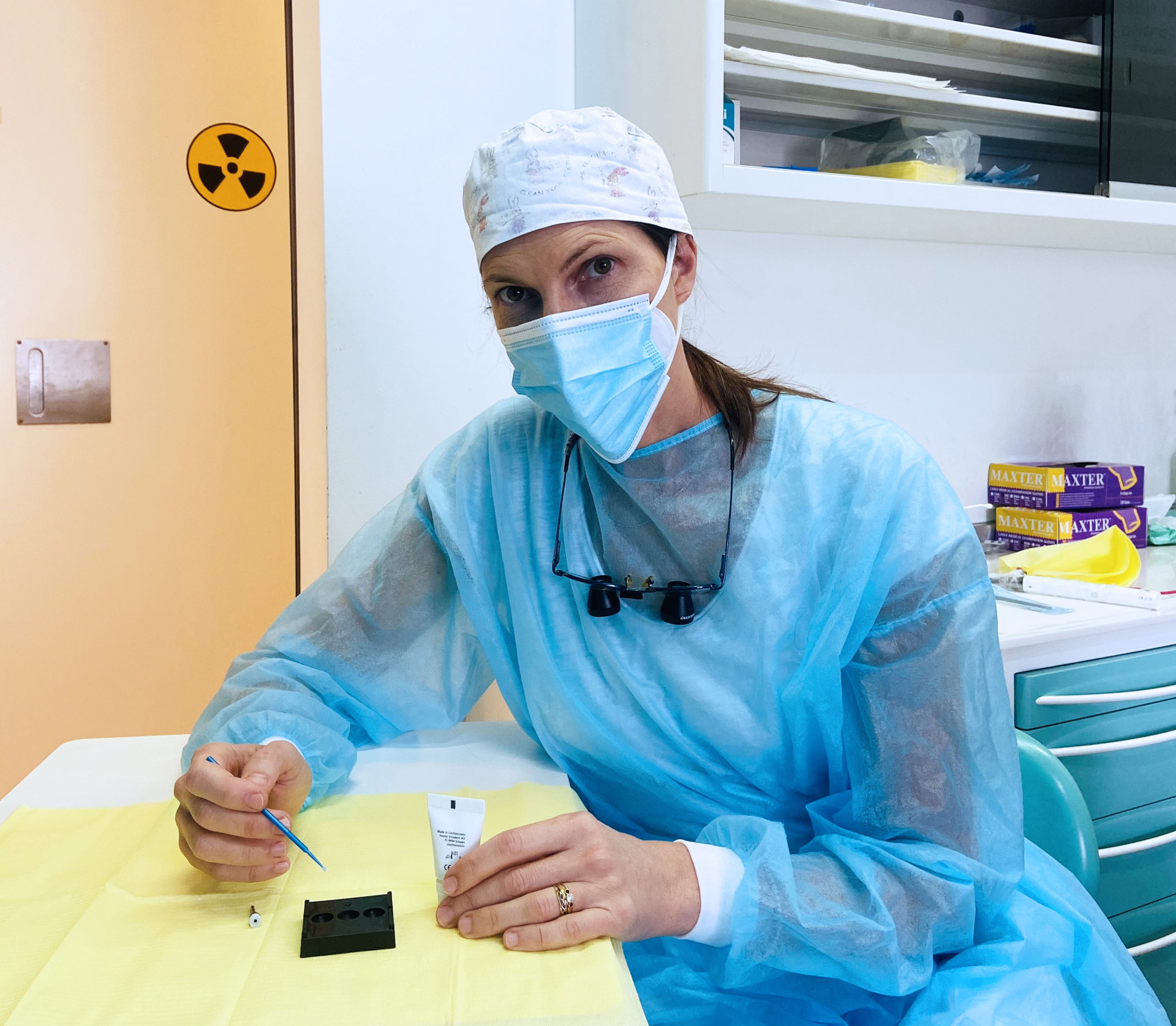Fluoride is important for its envolvement in the natural process of dental remineralization: meaning that physiological mechanism which strengthens our teeth through the application of minerals from the saliva to the tooth.
Old indications
Recent studies
The recommendation to use fluoride systematically has been downsized in the last few years, aiming more at topical fluoroprophylaxis, which precautionary effect is considered «more efficient» compared to systemic consumption, for which «scientific evidence is controversial».
That is why current ministerial guidelines for the prevention of cavities in developmental age recommend brushing teeth twice a day with a fluoride toothpaste, but with different concentrations and doses instead.
What doses of fluoride then?
- from 0 to 6 months old: use only water
- from 6 months to 2 years old: evaluate based on your kid’s capacity to spit toothpaste to avoid fluoride overdoses from ingestion. Start by putting a realty tiny amount of toothpaste on the bristles to get him used to the flavor. When you think he is ready, use a toothpaste with 1000 ppm fluoride (parts per million) twice a day, as small as a rice grain.
- from 2 to 6 years old: use a toothpaste with 1000 ppm fluoride (parts per million) twice a day, as small as a pea.
- over 6 years old: use a toothpaste with 1450 ppm fluoride (parts per million) twice a day, as small as 1cm long.
Fluoride can also be found naturally…
Fluorine is naturally present in many concentrations, in many foods we eat and in the water we normally use to drink, cook, grow and breed.
In such cases, the kid is exposed to a fluoride overdose which can also cause dental fluorosis.
Dental fluorosis, what is it?
When fluorine consumption is excessive compared to optimal levels and during the dental development stage (pre-eruptive stage), the enamel formation can alter. Its hypomineralization determines the appearance of dull spots and white, symmetrical, discolored stripes which, in most severe cases, can cause superficial lesions of the enamel, such as porosity and brownish areas. These clinial signs depend on the amount of fluoride absorption and the duration of exposure to fluoride.
Some advice…
We know, excesses are not good…
As parents we must check that our kid does not take too much fluoride by paying attention that he does not ingest toothpaste while brushing his teeth for example, by monitoring the amount he uses and by choosing a toothpaste with the right fluoride amount, based on his age.
Especially with small kids, always check the composition of the foods you buy.
Apart from fluoride toothpaste…
It is usually enough to use just a fluoride toothpaste (as per guidelines of the Ministry of Health). However, we can have particular cases of people at medium/high risk of caries (for example those suffering from MHI – Molar incisor hypomineralization)) or patients with a disability who struggle to keep a sufficient oral hygiene. In such cases, the specialist considers the use of additional measures such as varnishes and fluoride gels.
Their topical professional application is performed at the dental office twice or three times a year, while it is also possible to use fluoride gels at home, of course always on medical indication and parental supervision.
The use of fluoride mouthwashes can help as well, but only after the age of 6 to avoid danger of ingestion.
Do you have doubts on which toothpaste you should use or think that your kid could have defects of the enamel? Contact us, we would be happy to help you.

